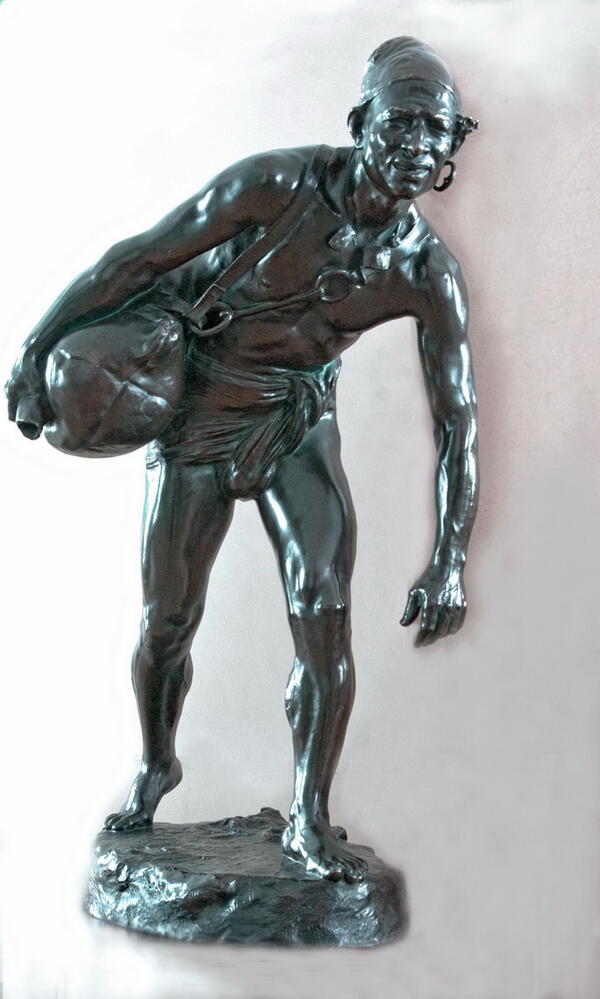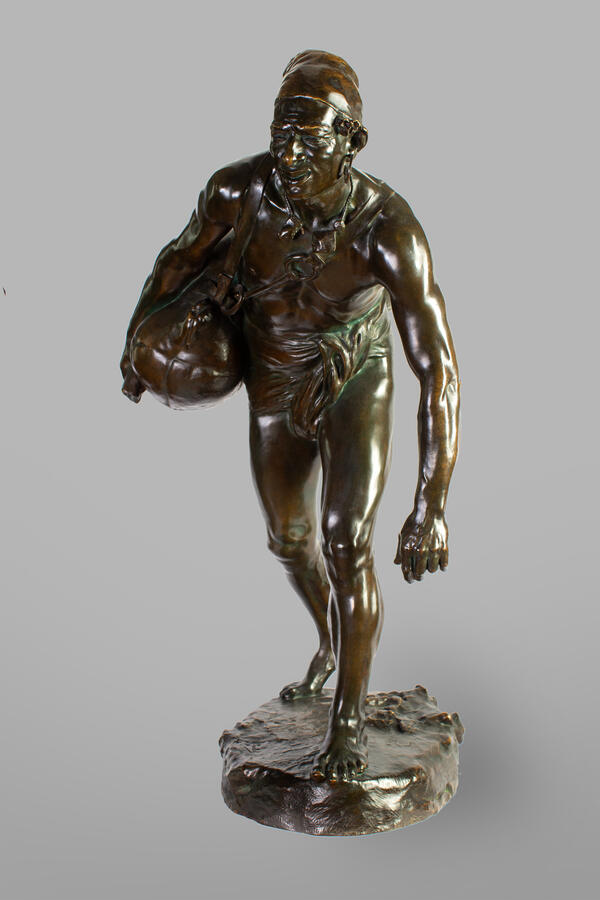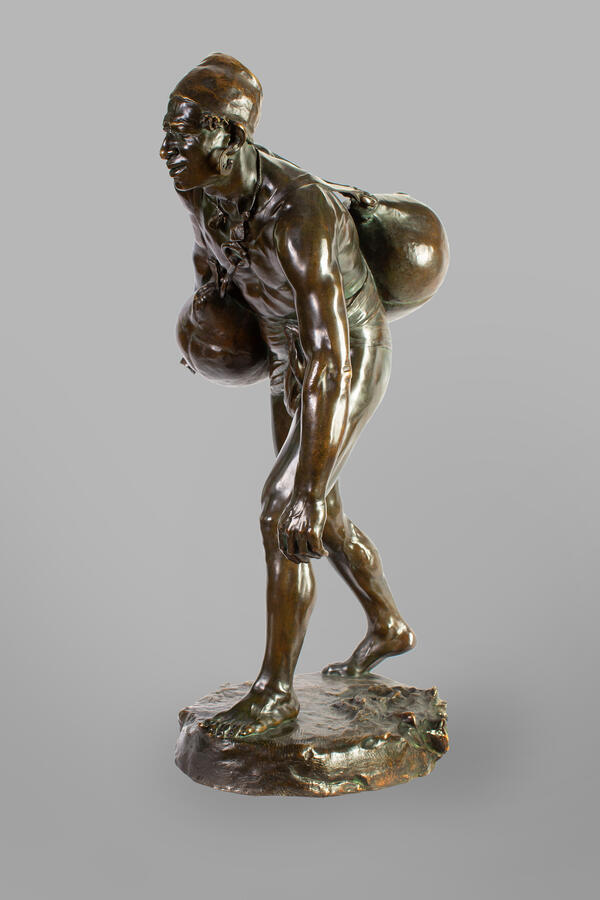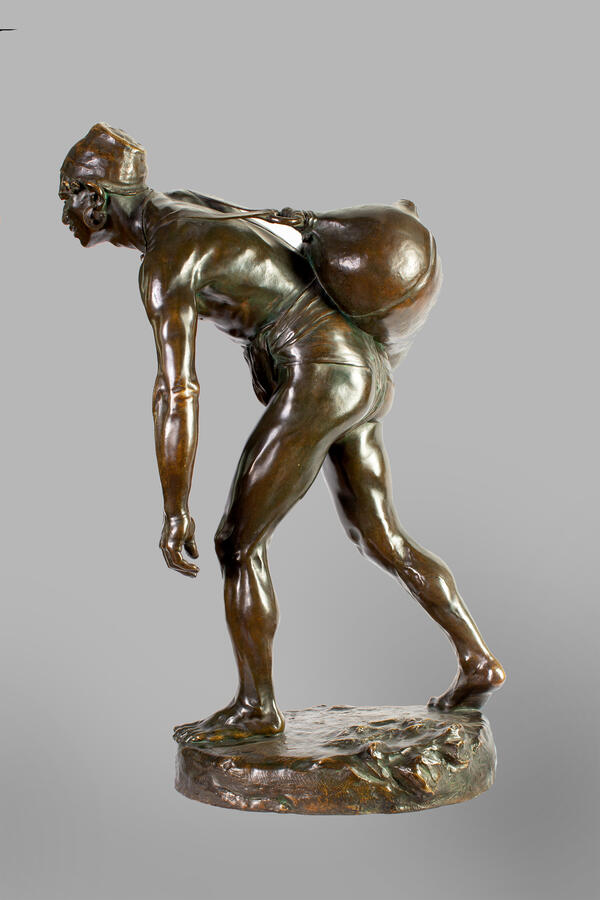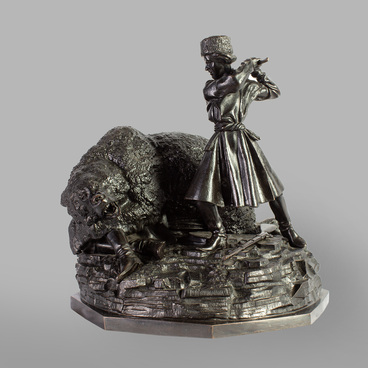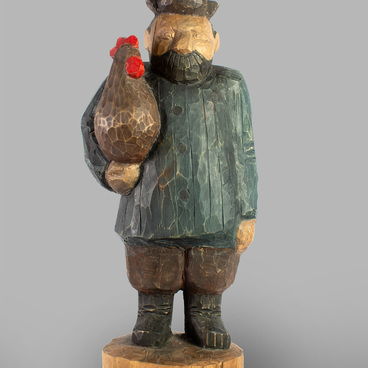In the last quarter of the 19th century, French artists became increasingly fascinated with the East. Its nature and colors, the completely different rhythm of life, and local people formed a unique aesthetic experience that attracted many painters and sculptors. The Tambov Art Gallery also houses a work inspired by Eastern motifs — the bronze sculpture “Water Carrier” by Georges Henri Guittet.
Unfortunately, little is known about the life and work of Georges Guittet (1872–1902). Between 1892 and 1902, he exhibited at the Paris Salon. His works included portrait busts, statues made of plaster, marble, and bronze, as well as genre pieces, and other types of statues. The list of his works includes the marble statue “African Water Carrier” from the Musée de Picardie in Amiens, France. The Tambov Art Gallery houses another version of this statue.
Guittet’s bronze “Water Carrier” entered the Tambov Art Gallery in 1961 from the collection of V.N. Yakovleva. She was the widow of Pavel Yakovlev (1898–1959), one of the closest followers of Ivan Michurin who was passionate about art and acquired many artworks. “Water Carrier” by Georges Henri Guittet depicts an African man carrying a wineskin behind his back. Although the statue features many realistic and convincing details, the sculptor failed to explore a socially acute topic. Most likely, the images of a figure bent under a heavy burden and the water carrier’s tired face were the result of the sculptor’s observations.
A wineskin is a bottle made of whole animal skin (from goats, horses, sheep, or other animals) and designed to store wine, kumis, and other liquids. Wineskins have been known since ancient times in Spain, the Transcaucasus, and eastern countries, as well as among some peoples of Siberia and Central Asia. A wineskin is made of animal skin, taken without any cuts except for the neck opening. Such a leather bag was turned inside out so that the wool surface was inside; the skin was rubbed with salt on the outside and soaked with tar on the inside. The neck opening and the legs were sewed up, and one leg opening was left for pouring liquid. The resulting waterskin was ready to be filled and used for storing liquids.
Unfortunately, little is known about the life and work of Georges Guittet (1872–1902). Between 1892 and 1902, he exhibited at the Paris Salon. His works included portrait busts, statues made of plaster, marble, and bronze, as well as genre pieces, and other types of statues. The list of his works includes the marble statue “African Water Carrier” from the Musée de Picardie in Amiens, France. The Tambov Art Gallery houses another version of this statue.
Guittet’s bronze “Water Carrier” entered the Tambov Art Gallery in 1961 from the collection of V.N. Yakovleva. She was the widow of Pavel Yakovlev (1898–1959), one of the closest followers of Ivan Michurin who was passionate about art and acquired many artworks. “Water Carrier” by Georges Henri Guittet depicts an African man carrying a wineskin behind his back. Although the statue features many realistic and convincing details, the sculptor failed to explore a socially acute topic. Most likely, the images of a figure bent under a heavy burden and the water carrier’s tired face were the result of the sculptor’s observations.
A wineskin is a bottle made of whole animal skin (from goats, horses, sheep, or other animals) and designed to store wine, kumis, and other liquids. Wineskins have been known since ancient times in Spain, the Transcaucasus, and eastern countries, as well as among some peoples of Siberia and Central Asia. A wineskin is made of animal skin, taken without any cuts except for the neck opening. Such a leather bag was turned inside out so that the wool surface was inside; the skin was rubbed with salt on the outside and soaked with tar on the inside. The neck opening and the legs were sewed up, and one leg opening was left for pouring liquid. The resulting waterskin was ready to be filled and used for storing liquids.

